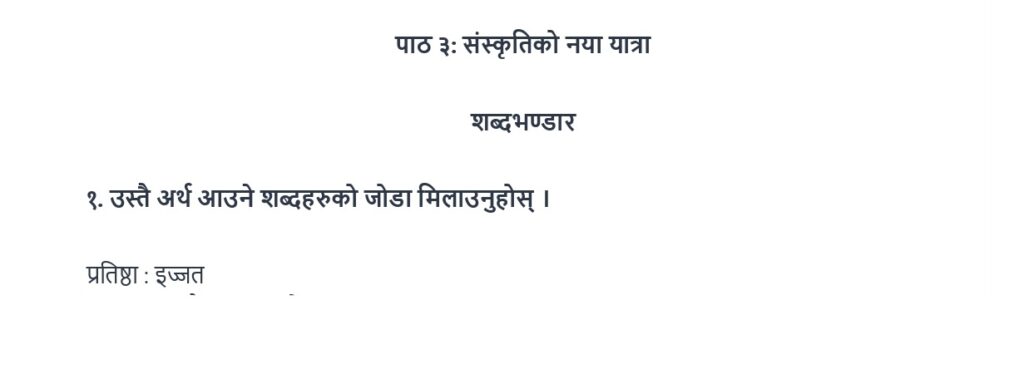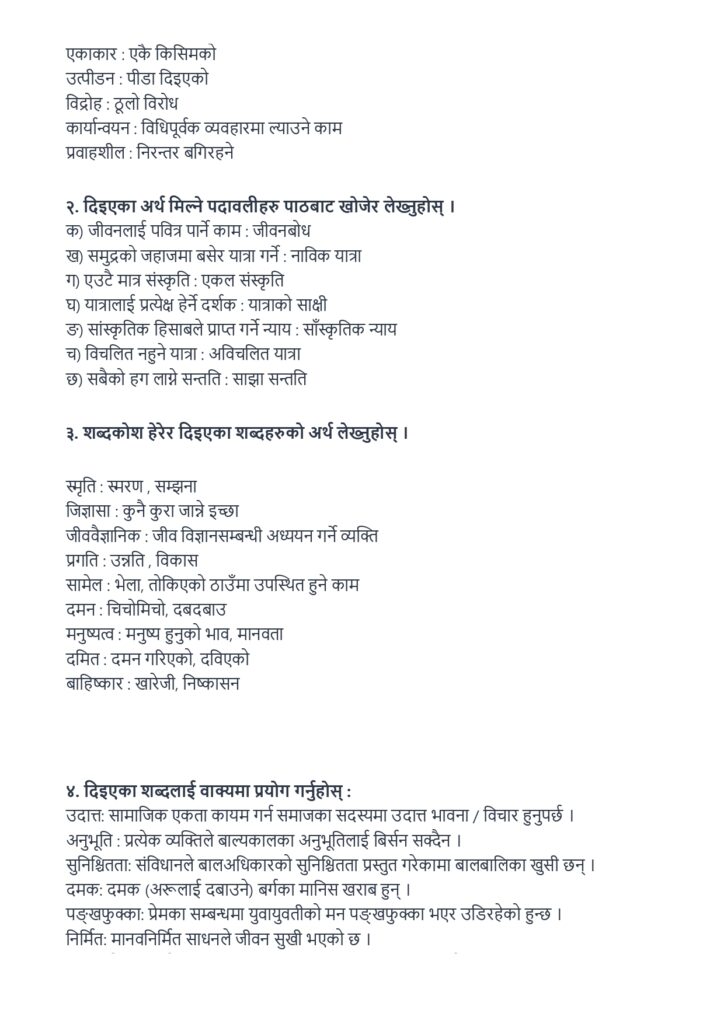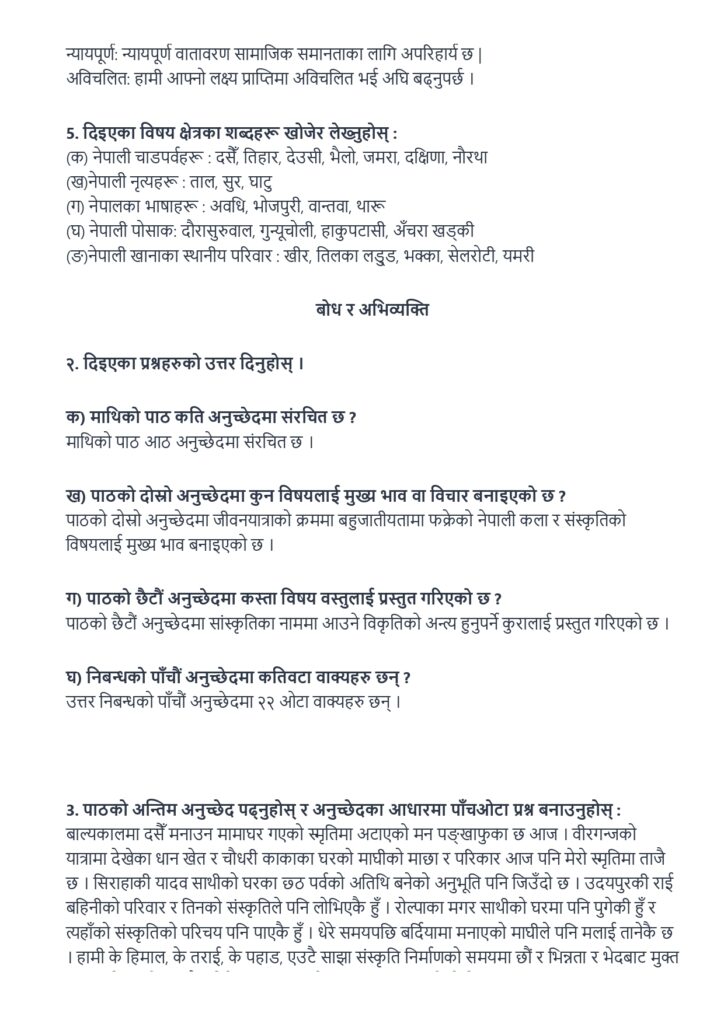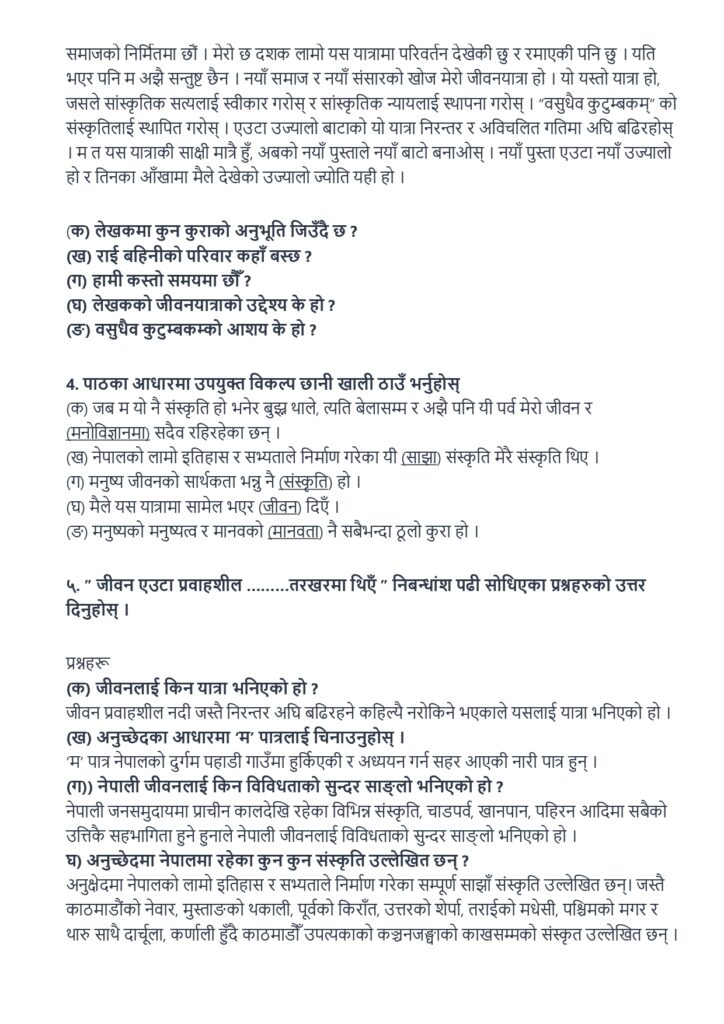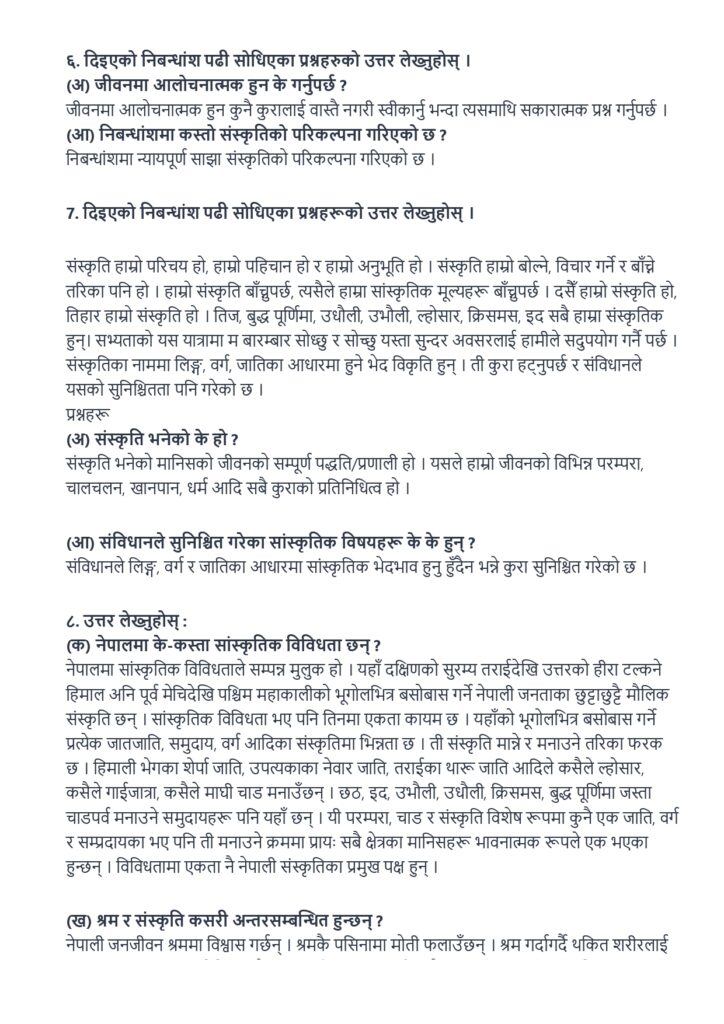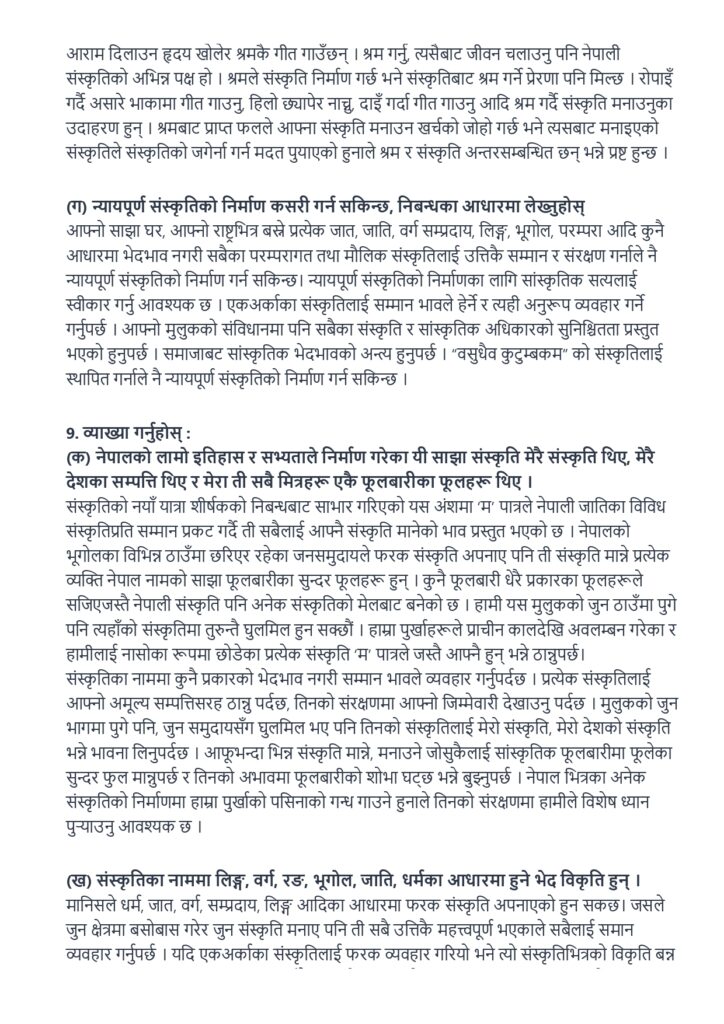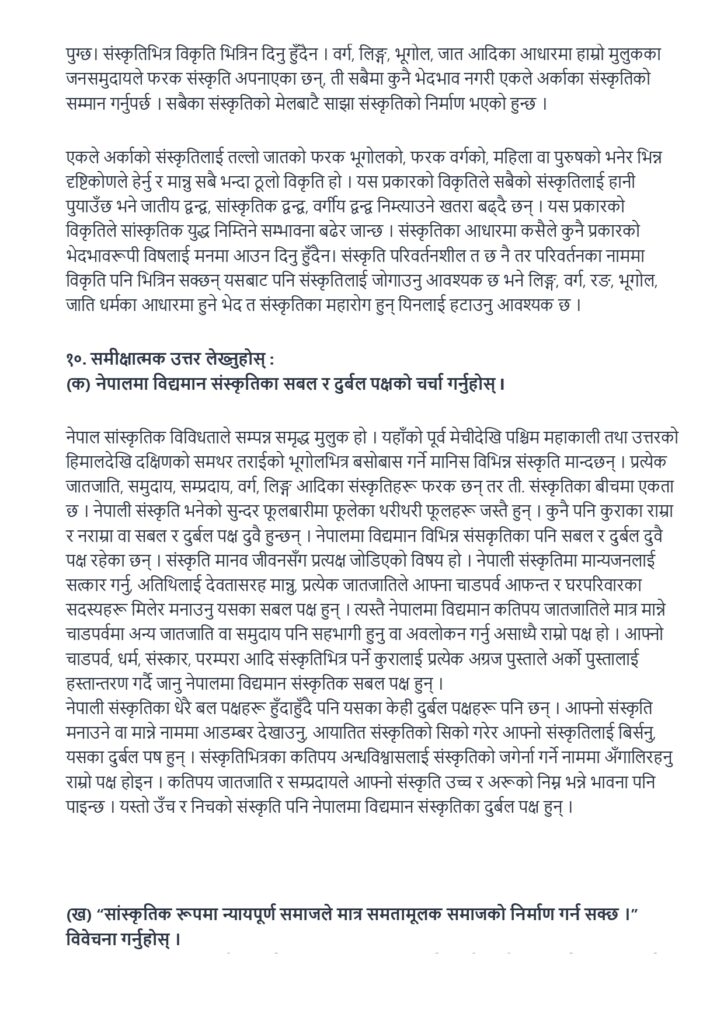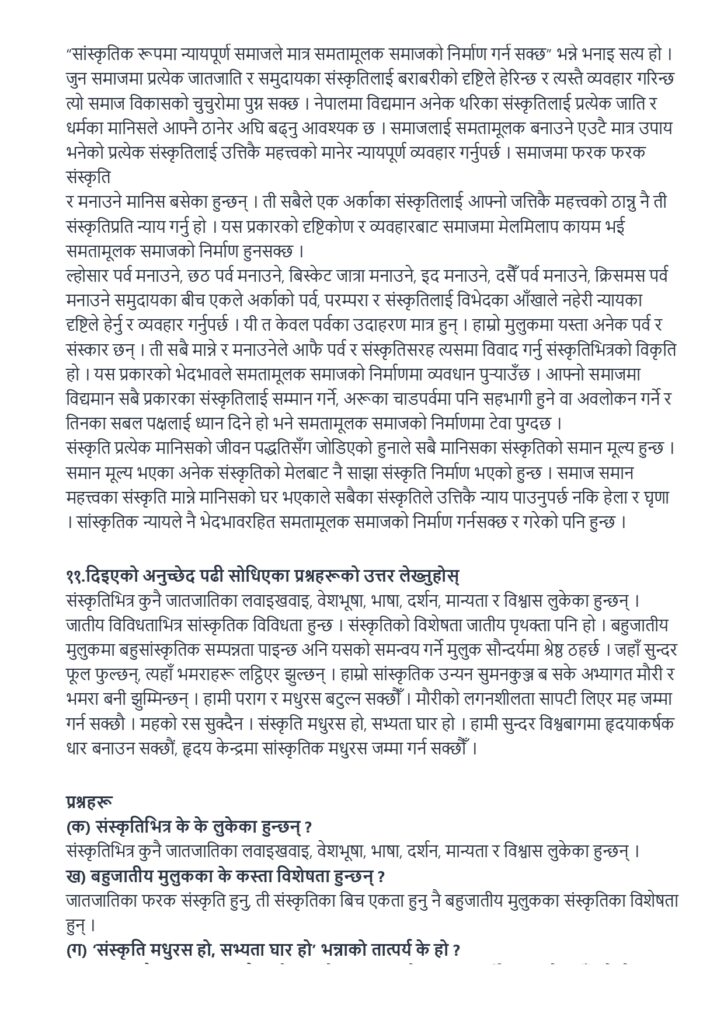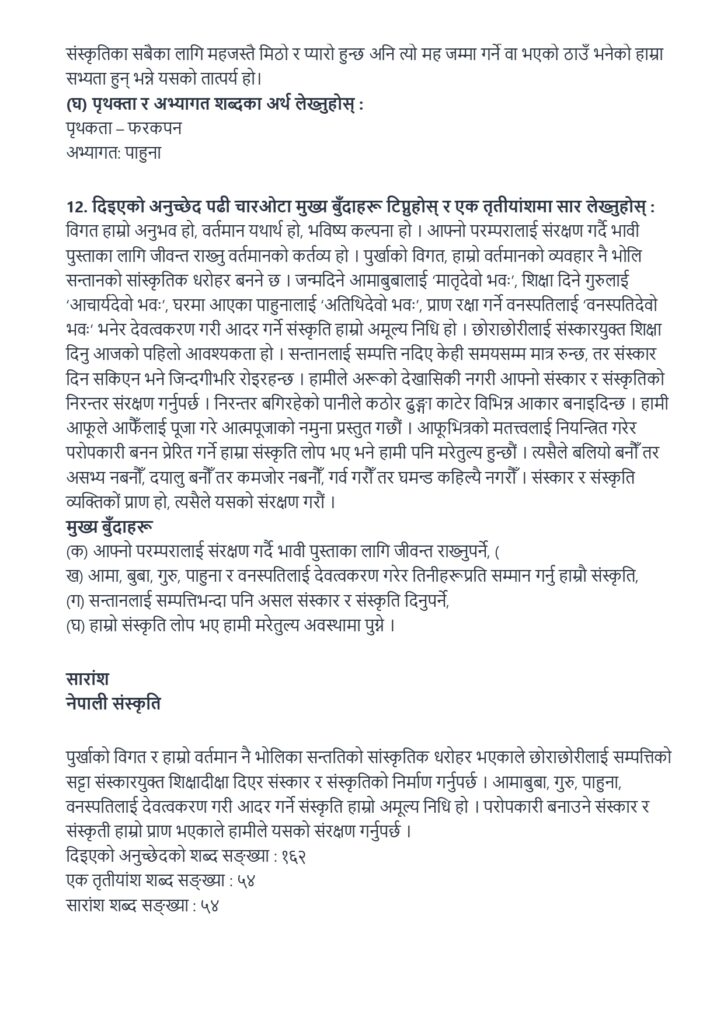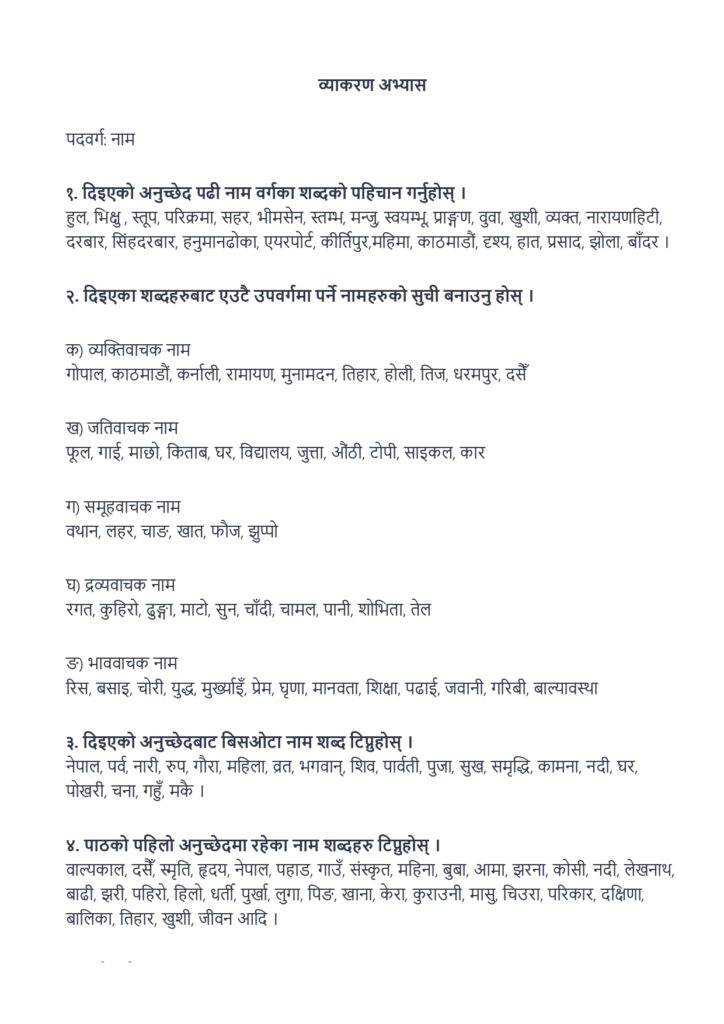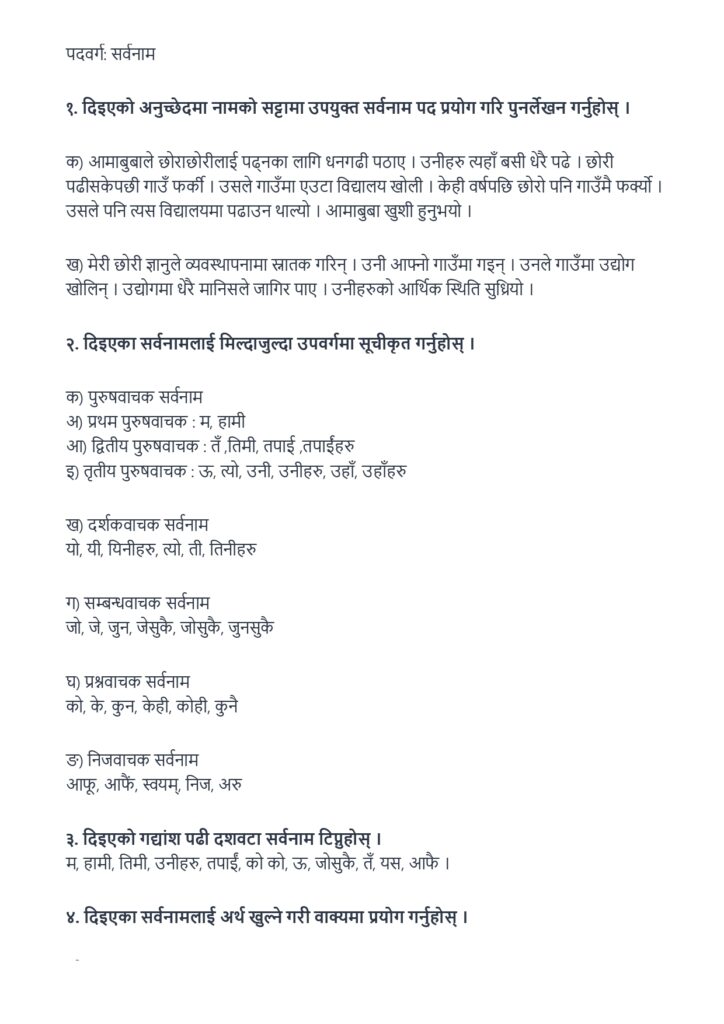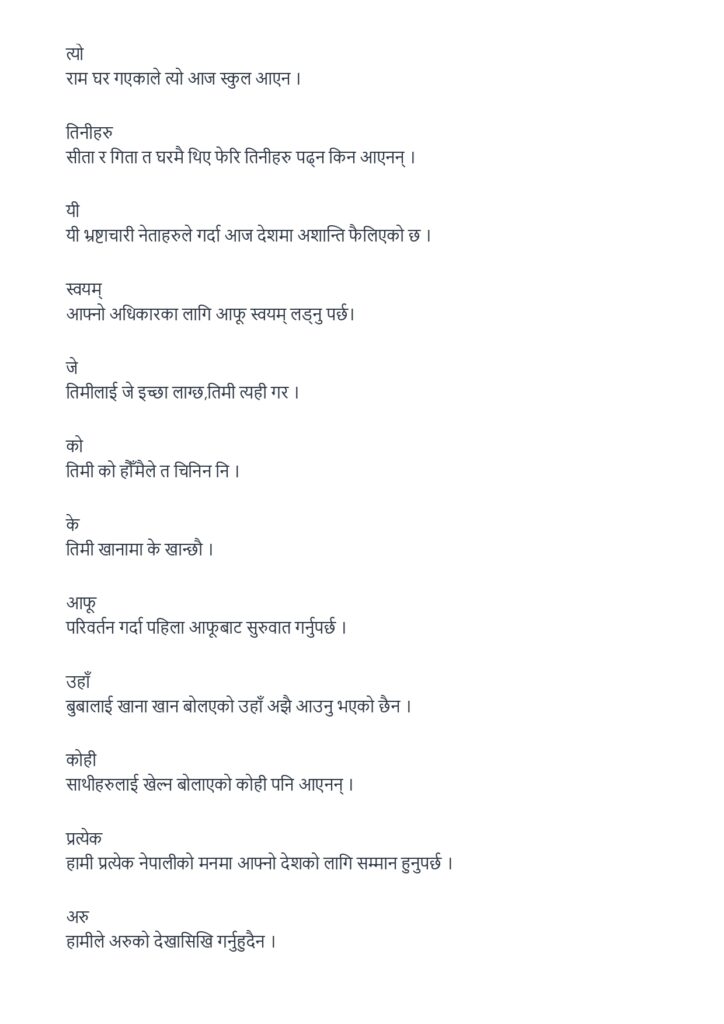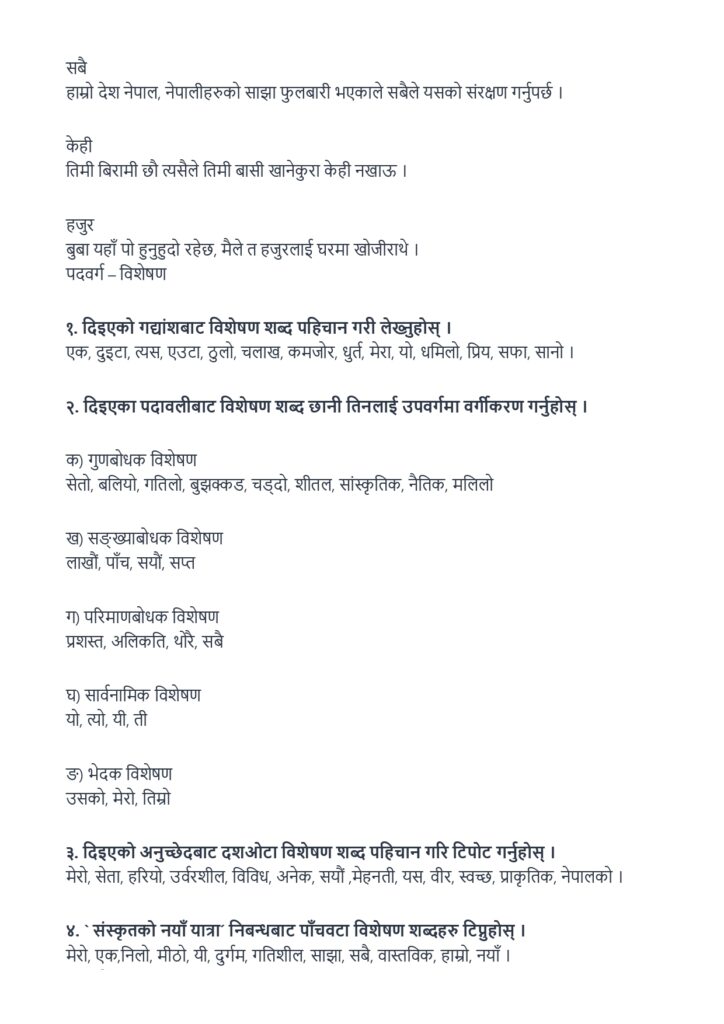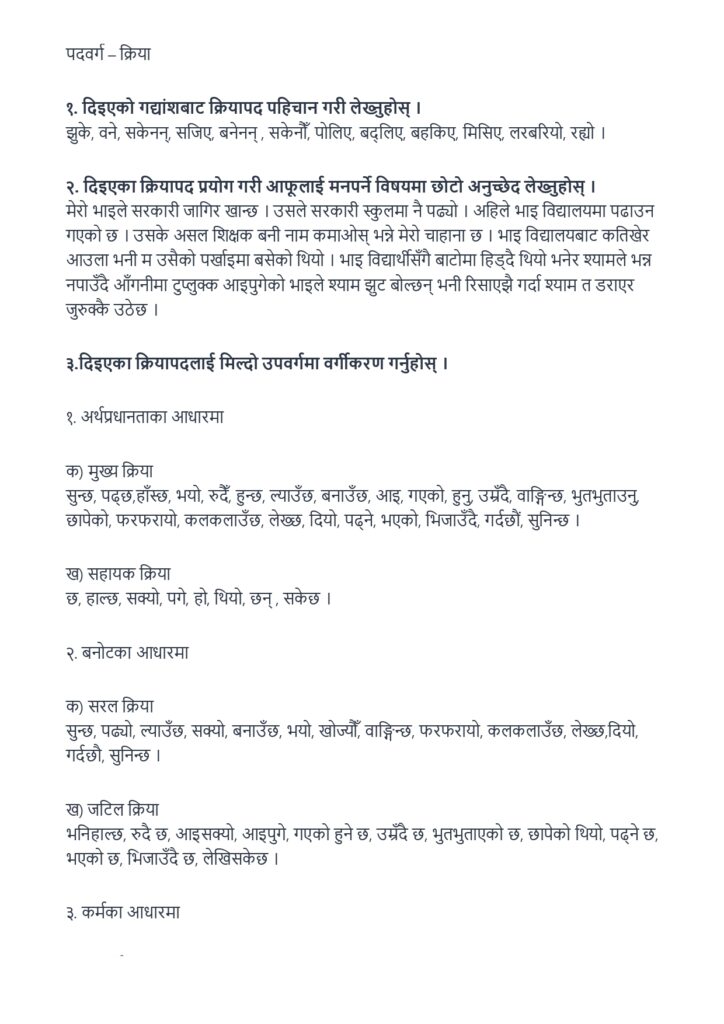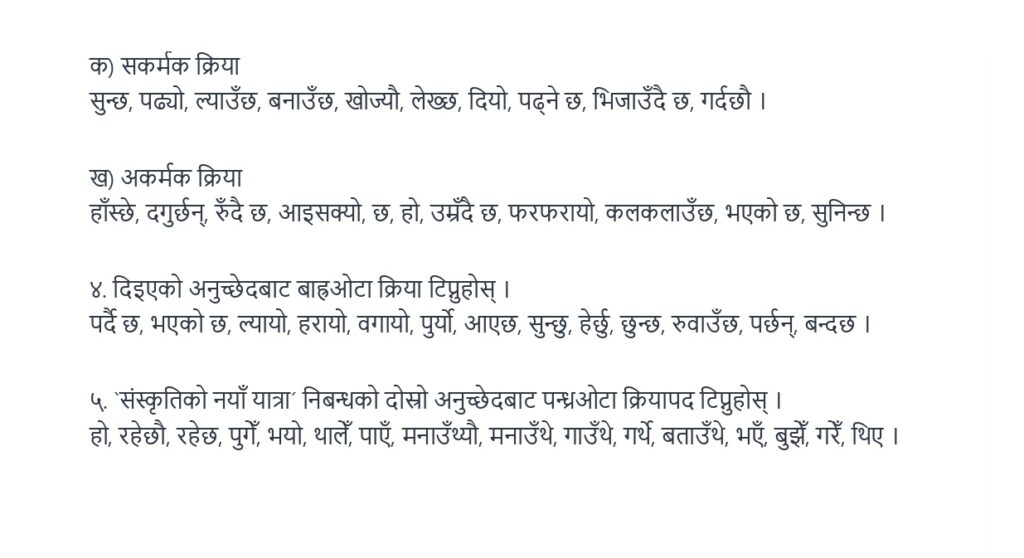In this article, we’ve provided Sanskritiko Naya Yatra Class 11 Nepali Chapter 3 Excercise. We’ve included all excercise, questions and answer. Enjoy this Class 11 Nepali guide chapter 3 excercise including byakaran.
Sanskritiko Naya Yatra Summary
“Sanskritiko Naya Yatra” is an essay penned by Dr. Sudha Tripathi. The translated title, “New Journey of Culture,” encapsulates the essence of the essay. It delves into the cultural tapestry of Nepal, a nation characterized by its multi-ethnic, multi-religious, and multi-lingual fabric.
The narrative of the essay sheds light on prevalent issues of discrimination and harmful cultural practices in society. Tripathi’s overarching objective is to foster a unified cultural and linguistic community that transcends discrimination and negative customs. Her writing passionately advocates for the eradication of superstitions, exploitation, oppression, and malevolent practices in societal structures.
At its core, the essay emphasizes the fundamental principle that individuals should not face unfair treatment based on class, race, gender, or religion. Tripathi envisions a society founded on trust, values, and norms.
The essay articulates several key points:
- During childhood, the essayist fondly recalls experiencing traditions, cultures, and natural wonders.
- The cultural festivities of Dashain and Tihar are ingrained in her psyche as integral components of Nepali culture.
- Upon relocating to Kathmandu, the author discovers the rich cultural tapestry of Buddhapurnima, Lhosar, Kismus, Maghi, Deuda, and more.
- The diversity within Nepali society is likened to a bridge connecting the regions of Mechi and Mahakali.
- Nepali society is metaphorically portrayed as a collective flower garden, with different races and cultures constituting its valuable assets.
- The essayist attains profound knowledge and life awareness through self-study.
- Despite the natural equality at birth, discrimination based on various factors mars human interactions.
- The essay underscores the role of labor in fostering cultural development and societal progress.
- Issues such as discrimination against women, gender roles, and practices like chhaupadi disturb the author.
- The essay advocates for the necessity of women’s resistance, citing figures like Mangaladevi and Yogmaya.
- The constitution is hailed for establishing cultural identity, and the call is made for its effective implementation to chart a new course for Nepali culture.
- Human beings, irrespective of gender, caste, or color, are portrayed as common children of nature.
- Culture, defined as identity, lifestyle, and collective experiences, is celebrated.
- The essay vehemently opposes discrimination based on gender, caste, or color, urging the establishment of an egalitarian and just society.
- The principle of ‘Vasudhaiva Kutumbakam’ (The whole world is one family) is promoted as a key to constructing a discrimination-free society.
Sanskritiko Naya Yatra : Class 11 Nepali Chapter 3 Excercise
